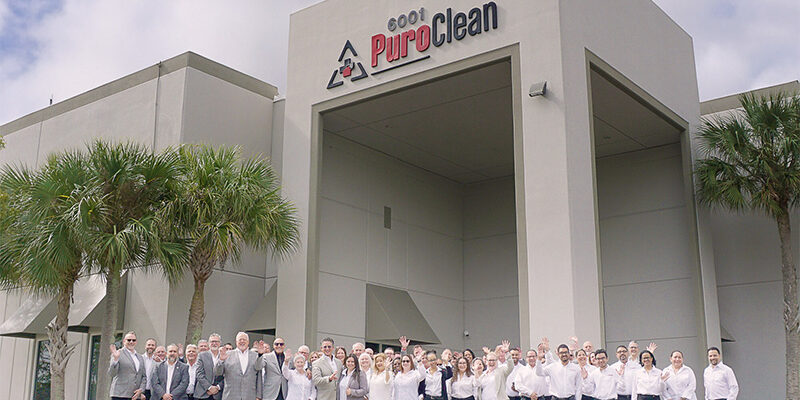Q&As with Cleanfax: Vacuum blower maintenance

“What are some good maintenance practices to ensure my vacuum blower doesn’t break down?”
To help prevent blower problems:
- After the last job of the day, block off the recovery tank vacuum port(s), and let the machine run for two to four minutes to dry out and heat up the blower.
- With the recovery tank still blocked, spray blower lubricant into the blower lube port for six to nine seconds.
- Let the machine run for two to four more minutes under a full load to allow the lubricant to spread fully through the rotor chamber.
- Release the vacuum load and allow the blower to run two to four more minutes with no load to cool off.
- If you are able to park the cleaning van(s) inside, after cleaning the recovery tank and filters and rinsing out the tank, keep condensation out of the blower by leaving the recovery tank lid off or propped open and the van windows down. This will also help prevent the recovery tank from getting a funky smell over time.
With vacuum blowers there are a few things that should be done to prevent premature failure. Daily checks should be done before heading to the first job of the day. Some blowers only have oil on one end, while other blowers have them on both ends. Make sure to reference the owner’s manual for proper procedures for checking the oil levels in the blower.
After the oil levels are verified and confirmed to be good, the next item that should be checked is the blower inlet filter inside the recovery tank. Make sure the filter is in good condition and free from debris. If the blower cannot flow air, it will overheat, and catastrophic damage may occur. A blower inlet filter and blower oils are much less expensive than replacing the blower.
Finally, at the end of the day, the recovery tank water should be emptied and the blower lubricated. Make sure to reference the owner’s manual again on proper “end of day” lubrication procedure for the blower. Properly lubricating the blower after the last job of the day will ensure the blower does not rust over time.
Making sure to perform these functions every day will help ensure you receive the best performance and longevity out of your vacuum blower. These procedures help prevent your blower from blowing up!
Tim DuPont National service and training manager Prochem Kärcher GroupOf all the parts of a truckmount, we get the most inquiries about the blower (technically, it’s called the vacuum pump): How to maintain it, how to keep it running at peak efficiency and how to protect it from damage. In fact, this equipment it is a very durable component, but it does require a certain amount of care in order to deliver reliable service. The following maintenance tips will certainly help to extend the life of a vacuum pump.
- Never set the vacuum relief valve too high. Sapphire Scientific recommends 14 inches Hg maximum. When the vacuum is set too high with little air flow, the vacuum pump will not cool properly. If this occurs, Thermal expansion will reduce clearances in the lobes and end plates and destroy the blower.
- Use the proper oil specified for the specific brand vacuum pump (example: Aeon PD).
- The oil must be maintained at the correct level — monitor oil levels regularly using the sight glasses on both sides of the pump.
- The oil must be changed annually or every 1000 hours, whichever comes first
- Lubricate the internal lobes daily using a water displacement product (example: WD-40).
- During storage, remove the waste tank lid, and rotate the vacuum pump shaft monthly. This reduces the amount of moisture that would otherwise be trapped in the vacuum pump.
- Maintain good and clean filtration. Clean the waste tank basket and filter(s) regularly. And do not use a damaged filter. A filter with a hole in it will not be able to keep destructive debris out of the vacuum pump.
- When cleaning carpet that has been previously shampooed, use a defoamer.
- Belt tension and alignment affects the bearing life of the vacuum pump. Inspect periodically.
- Periodically check for oil leaks.
- Check backpressure. Debris can restrict airflow through heat exchangers, causing the blower to overheat.
With proper maintenance and due care, your truckmount vacuum pump will provide many years of excellent performance. Please refer to your owner’s manual for specific instructions.
Scott Harlib Technical service Sapphire Scientific











